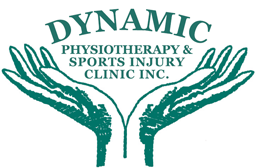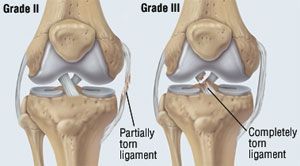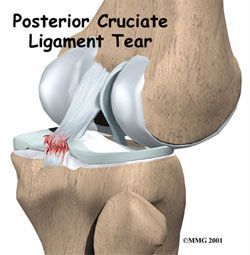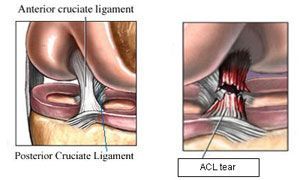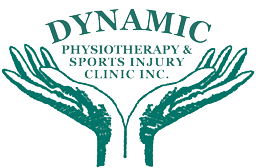Injuries To The Ligaments Of The Knee
ACL
anterior cruciate ligament
PCL
posterior cruciate ligament
MCL
medial collateral ligament
LCL
lateral collateral ligament
Functions Of The Ligaments Of The Knee
The knee is one of the largest and most complex joints in the body with the ligaments providing stability to the joint. The ACL or anterior cruciate ligament prevents the femur from sliding back onto the tibia or tibia sliding forward on the femur. The PCL or posterior cruciate ligament prevents the femur sliding forward on the tibia or tibia sliding backward on the femur. The MCL or medial collateral ligament and LCL or lateral collateral ligament prevent the femur from sliding side to side.
Ligaments are short bands of tough flexible fibrous bands of connective tissue that connects two bones or cartilages or holds together a joint.
Injuries to the knee are common with all four being fairly common.
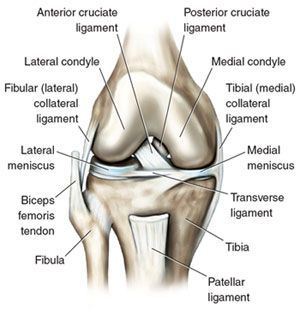
Causes Of Knee Injuries
- Direct trauma or blow to the knee, where a blow to the lateral or outside of the knee will cause damage to the Medial Colateral Ligament. A direct blow from behind the knee will cause damage to the ACL or anterior cruciate ligament
- The ACL ligament or anterior cruciate ligament is often injured by athletes in high demand sports such as soccer, football and basketball. The high speed direction change or landing incorrectly from a jump often can damage the ACL ligament
- The PCL ligament or posterior cruciate ligament is an injury often occurring from a direct blow, but can occur in sports related contact sports
- The MCL or medial collateral ligament and LCL or lateral collateral ligament are most often injured in sports where high speed directional change as well as blows or direct impact to the side of the knee causes injury. The most common injury to the knee ligaments is the MCL ligament where the outside of the knee is often directly struck
The Injuries To The Knee Or Often Classified Into Three Stages:
- Mild or 1st degree sprain, where there is a minor stretch or tear to the ligament. There is no instability on relaxed knee. The person can continue with activity with some discomfort
- Moderate or 2nd degree sprain, where tearing of the ligament fibres occurs. The degree of tear can be variable from several fibres to the majority of the fibres. There is a snapping sound at time of injury and the joint gives way. The joint is hypermobile (excessive joint play) and the person has difficulty continuing the activity due to pain
- Severe or 3rd degree sprain, where this is either a complete rupture of the ligament itself or where there is an avulsion fracture (bony attachment of the ligament is torn off while the ligament remains intact). There is a snapping sound and the joint gives way. There is significant instability and the person cannot continue the activity due to pain and hypermobility
Treatment For Injuries Of The Knee
- Initially for an acute injury to the ligament(s) of the knee treatment would consist of reducing inflammation, swelling and pain which results in fewer adhesions forming within the joint and helps to maintain proper range of motion of the knee
- Strengthening programs to specific muscles of the knee to help stabilize the structures around the knee to allow the ligaments time to heel
If you have any questions about ligaments of the knee either ACL, PCL, MCL, or LCL contact our staff at Dynamic Physiotherapy.
